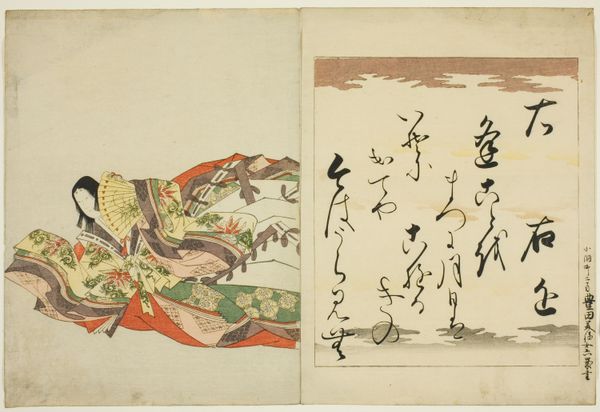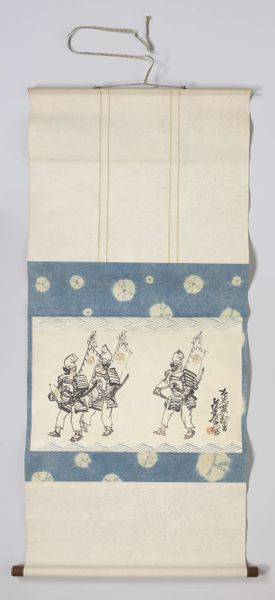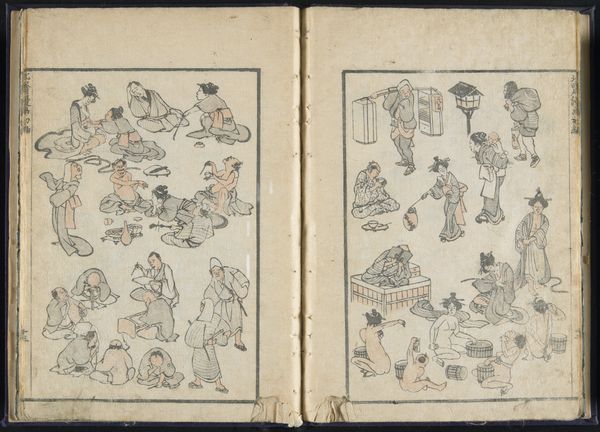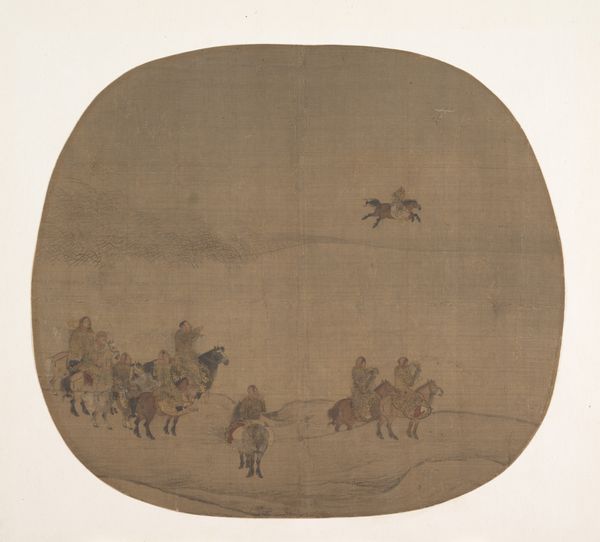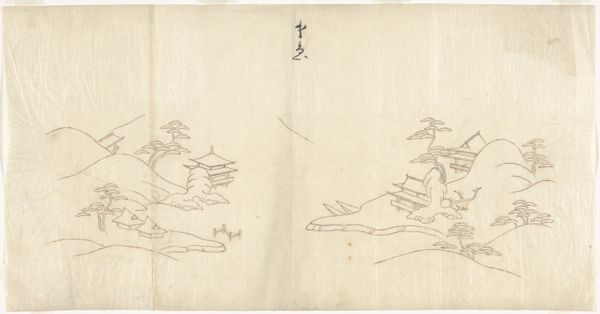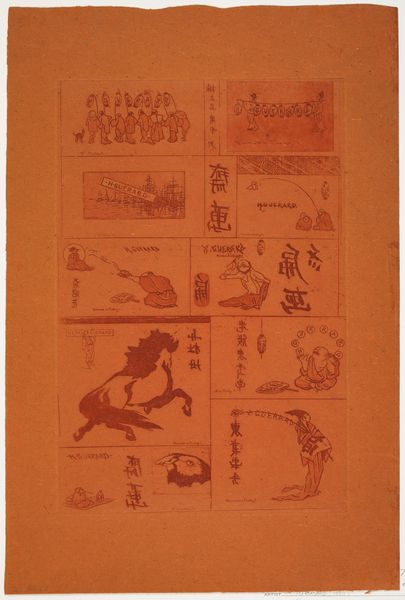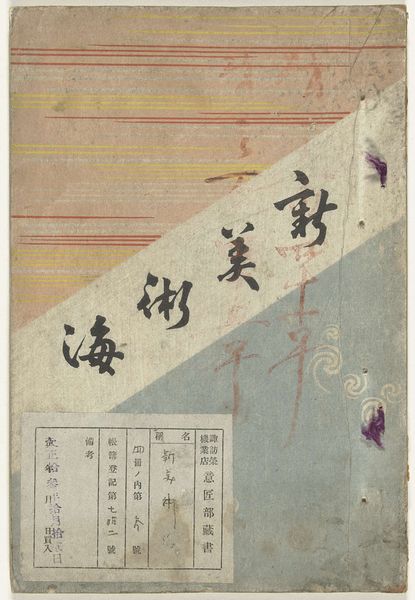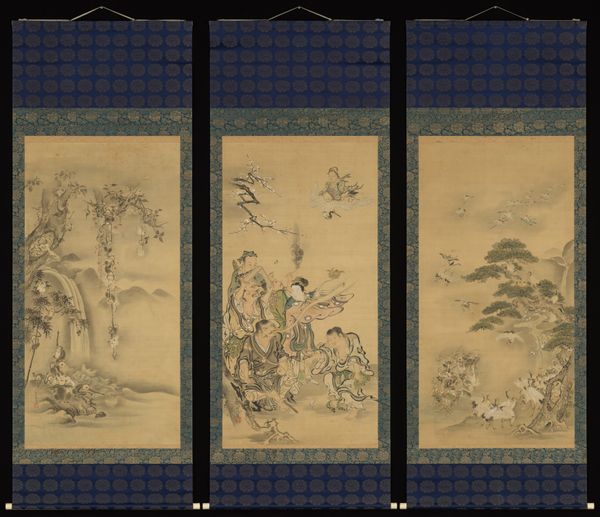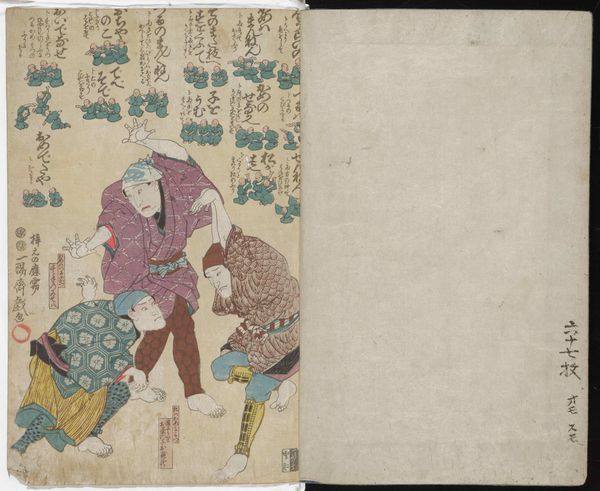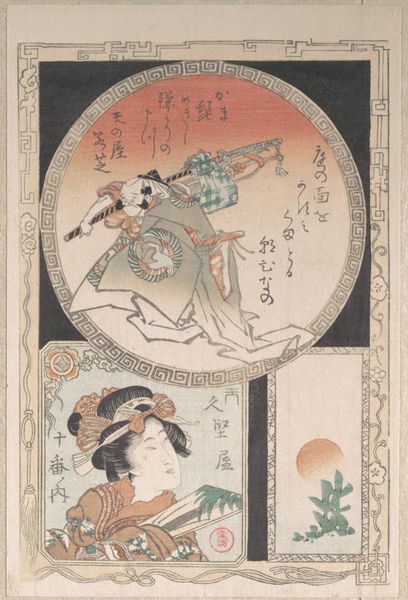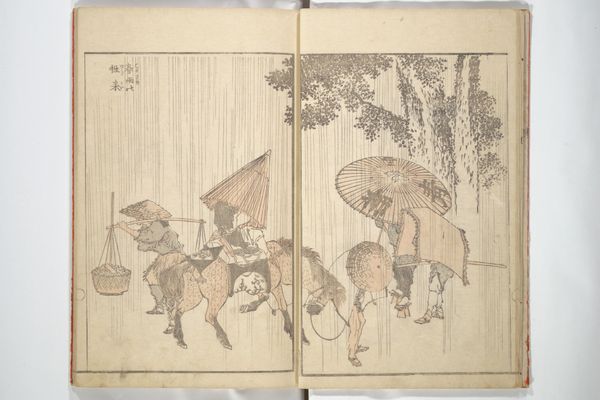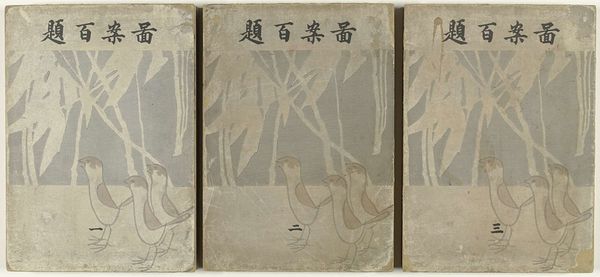
graphic-art, print, watercolor
#
graphic-art
#
water colours
# print
#
asian-art
#
landscape
#
watercolor
#
watercolor
Dimensions: height 244 mm, width 327 mm, thickness 77 mm, height 323 mm, width 315 mm, thickness 39 mm
Copyright: Rijks Museum: Open Domain
Curator: Here we have "Overzicht van China," or "Overview of China," a graphic art piece dating back to 1916 by Fukuda Bisen. What strikes you upon seeing it? Editor: The constrained palette! Primarily muted blues, oranges, and grays, seemingly watercolored. The composition is divided into horizontal bands, and those camels… hypnotizing. What exactly is an “overview” here, I wonder? Curator: I think Bisen's intent was to map China not just geographically but also politically. It was a tumultuous time, post-revolution and pre-warlord era. Look at the layers of imagery – a caravan traversing landscape, possibly referencing trade routes. It could also evoke collective journey as a kind of symbolic resilience amidst immense political chaos. Editor: Symbolism understood, but the sheer flattening of pictorial space is more engaging. Mountains are rendered as simple, almost childlike shapes; figures become part of rhythmic surface decoration, the whole verging towards abstraction, and the watercolor and printmaking methods give it that lovely hazy effect, but tell me about Bisen himself? Curator: Fukuda Bisen moved in complex social circles in the Kansai region of Japan. He contributed greatly to the modernization of Japanese art. One aspect that seems of critical importance when regarding this work is the rise of cultural nationalism within artistic circles at this point in time, when looking to their continental neighbours in the midst of colonialist dynamics. Editor: Fascinating to see how cultural nationalism manifests through aesthetic reduction—the strategic simplification, you see. How this reductive form becomes imbued with heavy sociopolitical connotations. Curator: Absolutely, and these horizontal bands containing so much could speak volumes. Perhaps the Great Wall being placed between mountain and camel lines represents boundaries. There is an almost subliminal commentary there. Editor: A perfect example how stripping away complexity of subject makes form so much more crucial. I shall always love this approach. Curator: As you say. When viewing through a political, socio-historical lens we are provided an entirely fresh set of questions for interpreting Bisen's work.
Comments
No comments
Be the first to comment and join the conversation on the ultimate creative platform.
